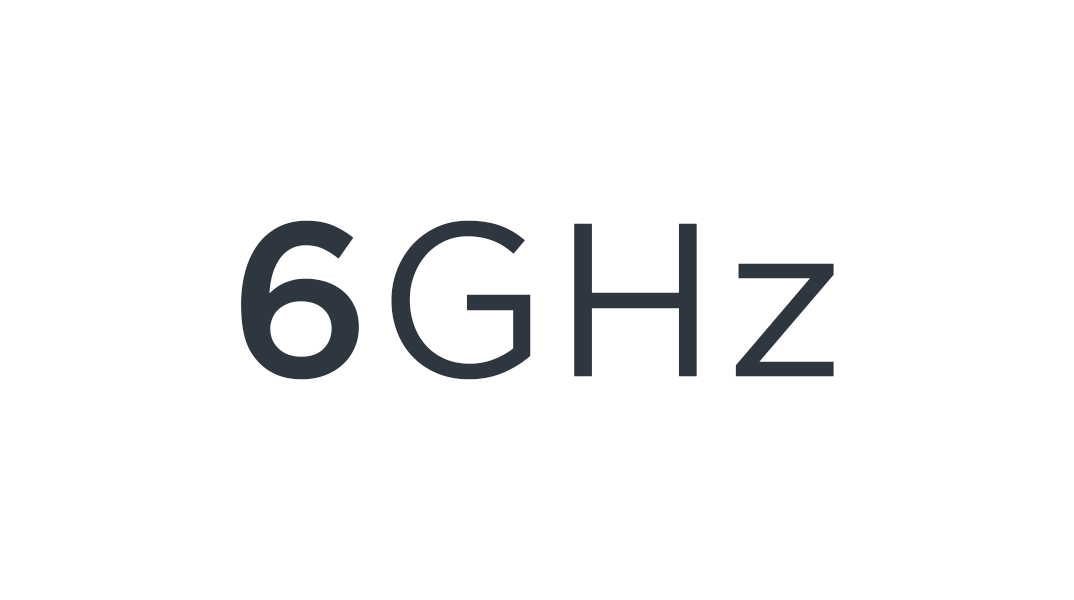
The Fight for the Future of the 6 GHz Spectrum
Competing technologies are all trying to secure valuable 6 GHz spectrum. Here’s what that means for the future of Wi-Fi.
Published on November 1, 2022

A Tug of War Over the 6 GHz Range
The Wi-Fi Alliance recently posted a very compelling paper arguing that the potential International Mobile Telecommunications (IMT) designation of the upper 6GHz band (6.45 to 7.12 GHz) for use by 5G networks, devices and services, by the World Radiocommunications Conference in 2023 (WRC-23), would not be in anyone’s best interests.
Providing a broad set of arguments that range from technical to environmental, the paper lays out why designation of this spectrum could delay introduction of Wi-Fi 6E solutions, create significant uncertainty and disrupt global 6GHz connectivity deployments unnecessarily.
Three Takeaways
In short, the conflict over the 6 GHz spectrum boils down to this: The International Telecommunication Union has proposed reserving a significant portion of the unlicensed 6 GHz spectrum for cellular use, as many governments worldwide are moving to finalize the authorization for this same spectrum’s use in Wi-Fi 6. For a number of reasons, including their projected increase in demand for worldwide 5G cellular connectivity, the latest IMT standards call for the upper half of this spectrum to be earmarked for 5G cellular.
In addressing these demands, the Wi-Fi Alliance focuses on a few key areas where designating this spectrum for cellular is a non-starter: interoperability problems with incumbent users, the availability of other underutilized cellular spectrum, and a lack of infrastructure and equipment in 5G to facilitate expansion. These and more are covered in much greater detail in the paper, but the following are some key points:
- Interoperability problems: Whereas Wi-Fi is largely confined to a smaller footprint and is built with coexistence mechanisms to avoid incumbent traffic within its designated spectrum, cellular connectivity has no such capability. Cellular coverage can reach for as much as 1 to 5 miles, in extremes, meaning large geographic areas would suddenly see new activity in frequency ranges with existing incumbent technologies. With no way to avoid interference, 6 GHz cellular poses a potential threat to existing users of this spectrum.
- There is more underutilized spectrum already for 5G: For the use cases identified for 6 GHz, cellular has much underutilized frequency already before expanding allocations for 5G. In fact, of all spectrum already dedicated to 5G, frequency utilization stands at approximately 60%. Previous frequency allocations for 2G, 3G, and 4G can be repurposed for utilization in 5G. And other frequencies, such as 7 GHz, 12 GHz, 26 GHz, and more are viable for exploration both for outdoor cellular coverage and indoor small cell coverage without impeding the spectrum already widely allocated for Wi-Fi 6E.
- Lacking equipment, infrastructure, and investment: The timelines for 6 GHz utilization on LTE are years and years out, almost definitely more than five years out, as this band is only just added to the IMT Release 17 specification. Starting with regulatory support and continuing through infrastructure growth, chip and device adoption, and more, adding this frequency support to 5G means disrupting what is possible here and now with Wi-Fi 6. It’s possible that 6 GHz will never achieve that broad adoption as 5G operators explore previously mentioned alternative frequency ranges and higher-frequency small cell indoor topologies that better suit the use cases driving this 6 GHz consideration.
Conclusion
As we’ve been covering in our Wi-Fi 6E blog series, Wi-Fi is very soon poised to take advantage of this spectrum and is seeing approvals in more and more countries around the globe. Also as we’ve covered, this spectrum is necessary to achieve the dramatic improvements inherent in Wi-Fi 6E, such as increased link rate, low latency, and more.
The paper from the Wi-Fi alliance explores further topics too, including the fact that Wi-Fi’s utilization of 6 GHz spectrum provides a more cost-effective, more power-efficient, overall higher value implementation than would be possible in 5G cellular. It’s supported more readily by existing networking infrastructure and stands to make a much more meaningful impact on quality of service than is proposed by 5G utilization.
The paper can be downloaded here (6 GHz Wi-Fi®: Connecting to the future (2022)). I encourage you to review the paper and make your own mind up on this very contentious issue.
Andrew Ross
Senior Product Manager
Ezurio (formerly Laird Connectivity)
 Laird Connectivity is now Ezurio
Laird Connectivity is now Ezurio